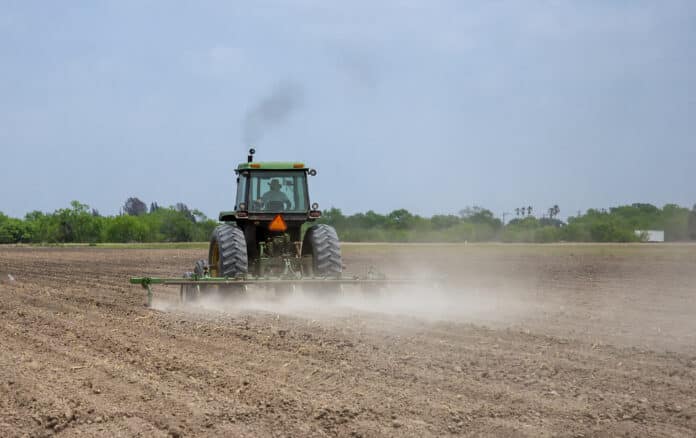The U.S. Department of Agriculture reminded farmers, growers and producers that there are a number of programs available to help them recover from economic hardships, including those caused by drought.
“In addition to recovering from recent winter storms, ranchers and livestock producers continue to experience the impacts of severe drought conditions,” Eddie Trevino, acting state executive director for USDA’s Farm Service Agency (FSA) in Texas, said. “FSA remains ready to respond to and assist producers with recovery from this ongoing disaster.”
LIVESTOCK FORAGE DISASTER PROGRAM
This year, 144 counties in Texas have met drought ratings that trigger eligibility for livestock disaster assistance.
Ranchers and livestock producers may be eligible for financial assistance for grazing losses through the Livestock Forage Disaster Program (LFP).
LFP provides payments to livestock owners and contract growers who also produce forage crops for grazing. They must have suffered losses due to a qualifying drought during the normal grazing period for the county.
“Eligible livestock include alpacas, beef cattle, buffalo/bison, beefalo, dairy cattle, deer, elk, emus, equine, goats, llamas, reindeer, or sheep that have been or would have been grazing the eligible grazing land or pastureland during the normal grazing period,” a news release from the USDA stated.
To expedite the application process, producers are encouraged to gather and submit records documenting this year’s losses. Supporting documents may include information related to grazing leases, contract grower agreements and more.
The deadline to apply for 2021 assistance is Jan. 31, 2022. Visit the FSA Texas webpage for a list of eligible counties and grazing crops.
ADDITIONAL DISASTER ASSISTANCE FOR DROUGHT
“USDA encourages producers to contact the FSA county office at the local USDA Service Center to apply for eligible programs and to learn which documents, such as farm records, herd inventory, receipts and pictures of damages or losses should be provided to help expedite assistance,” the news release said.
The Emergency Assistance for Livestock, Honeybees, and Farm-Raised Fish Program provides compensation for feed losses not covered by LFP, as well as assistance with water hauling expenses.
For ELAP, producers will need to file a notice of loss within 30 days and honeybee losses within 15 days.
Additionally, orchardists and tree growers may be eligible for cost-share assistance through the Tree Assistance Program (TAP) to replant or rehabilitate eligible trees, bushes or vines lost during the drought.
This complements crop insurance coverage, which covers the crop but not the plants or trees in all cases. For TAP, a program application must be filed within 90 days.
FSA also offers a variety of loans to producers unable to secure commercial financing. Those affected by a disaster may also be eligible for low-interest emergency loans to help them recover from production and physical losses.
Loans can help producers replace essential property, purchase livestock, equipment, feed and seed, cover family living expenses or refinance farm-related debts and other needs.
RISK MANAGEMENT
Producers who have risk protection through Federal Crop Insurance or FSA’s NAP should report crop damage to their insurance agent or FSA office. If they have crop insurance, producers should report damage to their agent within 72 hours of discovering the damage and follow up in writing within 15 days.
For NAP covered crops, a Notice of Loss must be filed within 15 days of the loss becoming apparent, except for hand-harvested crops, which should be reported within 72 hours.
CONSERVATION
There is also help for landowners and forest stewards who need financial and technical assistance to restore damaged farmland or forests through the Emergency Conservation Program and Emergency Forest Restoration Program.
ASSISTANCE FOR COMMUNITIES
The Emergency Watershed Protection Program provides technical and financial assistance through local government sponsors to address imminent threat to human life and/or property caused by severe erosion or drought.
Sponsors must submit a formal request via mail or email to the state conservationist and an emergency declaration must be issued. For more information, email Mark Northcut, landscape planning engineer, at [email protected].





